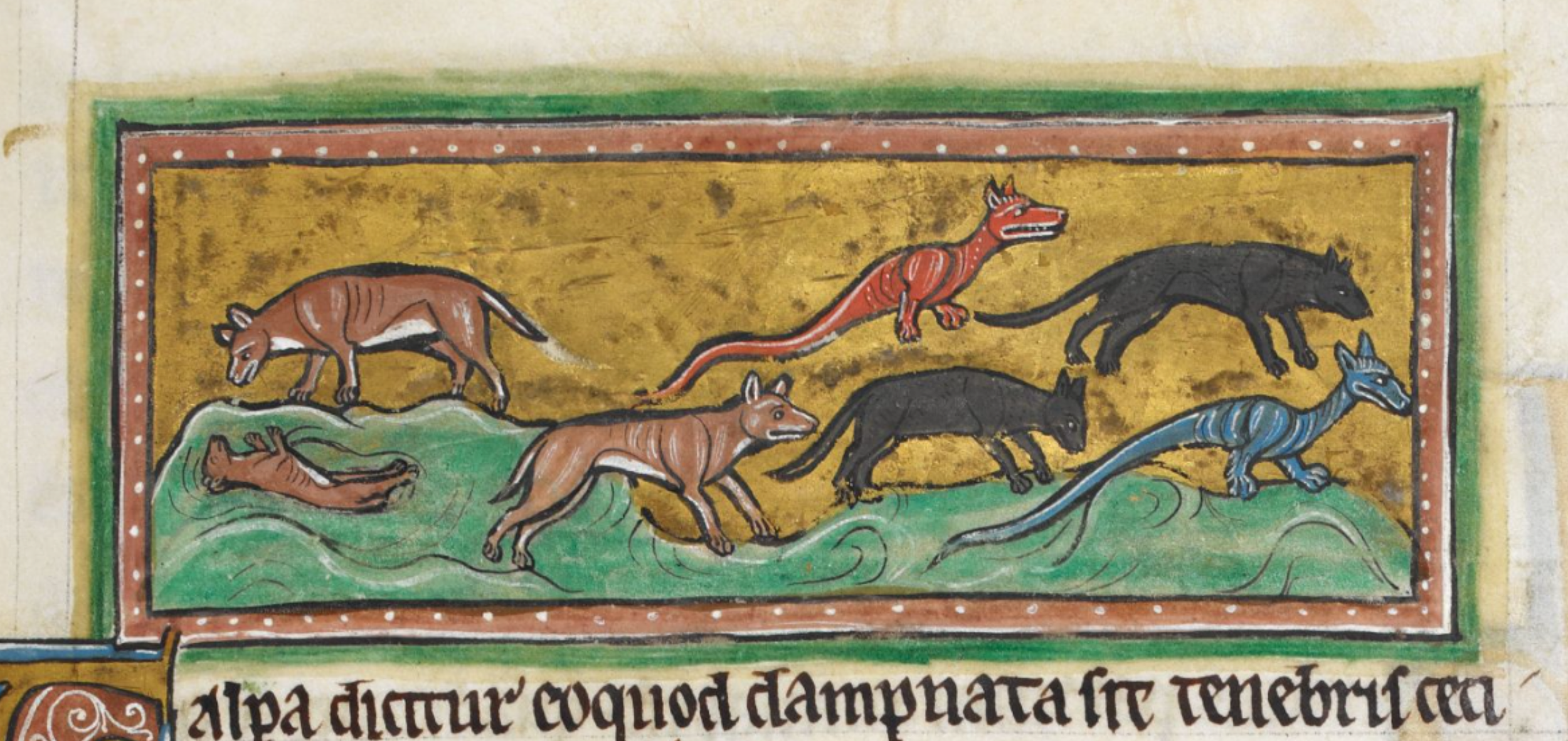Weasel, Rochester Bestiary, c.1230
The weasel is a creature of mystery and intrigue, its slender form resembling a long-tailed mouse.
Echoing ancient texts like Leviticus, where it is listed among the unclean creatures, the weasel embodies a duality of symbolism. On one hand, it is a cunning hunter, relentless in its pursuit of its preys, whether it be snakes or mice. On the other hand, it is a creature of change and adaptation, forsaking old dens for new ones, a symbol of constant renewal and transformation.
Amidst the tales of its cunning and agility, there are myths of its alleged ability to conceive through the mouth and birth through the ear, a notion as fantastical as it is intriguing. In the hands of experienced physicians, the weasel's offspring are believed to hold the key to resurrection, a testament to the enduring mysteries of nature.
A deeper allegory lies in the weasel's enigmatic presence. Just as it conceals its cubs and changes its dens, so do many souls hide their true beliefs and desires, constrained by the love of earthly pleasures. In the weasel's silent dance through the shadows, we glimpse a reflection of our own struggles to heed the principles of the divine amidst the distractions of the material world.
Thus, in the weasel's cunning and adaptability, in its elusive nature and whispered secrets, we find a mirror to our own journey—a reminder to seek truth amidst the shadows and to embrace change as the harbinger of growth and renewal.
nens. Nam thelon greci longum dicunt. et ideo
furtum prohibet. De qua in levitico dicitur. Mus-
tela et mus et cocodrillis; inmunda erunt vobis.
Mustela est ingenio subdola. In domibus ubi nutrit
catulos suos; transfert mutataque sedem. Serpentes
muresque persequitur. Duo sunt genera mustelarum.
Alterum enim silvestre est. distans longitudine. alte-
rum in domibus oberrans. Falso qutem opinantur
quidam qui dicunt mustelam ore concipere. aure
partum effundere. Dicunt periti medici. si forte fue-
rint occisi eorum fetus. si invenire potuerint;
redivivos faciant. Significant aliquantos qui
libenter quidem audiunt divini verbi semen sed
amore terrenarum rerum detenti; pretermittunt et dissimu-
lant quod audierint;
The weasel is said to be like a long mouse and to remain on the ground. The weasel is called mustēla as if it were a mouse, mūs that has a long dart, tēlum for preventing theft. Leviticus says of it: “These also shall be unclean unto you among the creeping things that creep upon the earth; the weasel, and the mouse, and the tortoise after his kind (Leviticus KJV 11:29)”.The weasel is cunning in character. Once it has fed its cubs in one den, it changes the den and seeks a new one. It hunts snakes and mice. There are two kinds of weasels: one is wild and roves far away in the forests; the other one wanders in dens or houses. Some falsely believe that the weasel conceives through the mouth and gives birth through the ear. Experienced physicians say that if their offspring happen to be killed, and the parents find them, they can bring them back to life. The weasel signifies that a fair amount of people who willingly heed the principles of the Word of God but they are restrained by the love for earthly things, neglect and conceal what they have heard.
Bibliography
David Badke, The Bestiary Blog: Animals in the Middle Ages, Domouse, November 6 2023, https://bestiary.ca/beasts/beast101972.htm
Josh Goldenberg (BA 2012) and Matt Shanahan (BA 2014), Logeion, November 2022, https://logeion.uchicago.edu/
Castiglioni, L. and Mariotti, S. (1996). Vocabolario della Lingua Latina: Latino-Italiano Italiano-Latino. Terza Edizione. Loescher Torino
Matthews, J. and Matthews C., (2010), The Element Encyclopedia of Magical Creatures, HarperCollins UK, London
Curley, M. J., Physiologus: A Medieval Book of Nature Lore (University of Chicago edition 2009)
Rackham, H., M.A., Pliny Natural History Volume III, Libri VIII-XI (London: William Heinemann Ltd, 1949)
Collins, A. H., M.A., Symbolism of Animals and Birds (New York: McBride, Nast & Company, 1913)
Henderson, C., The Book of Barely Imagined Beings (London: University of Chicago Press, 2013)
White, T. H., The Bestiary: A Book of Beasts (New York: G.P Putnam’s Sons, 1960)
Barney, S. A., Lewis, W. J., Beach A., Berghof O., The Etymologies of Isidore of Seville (New York: Cambridge University Press, 2006)

